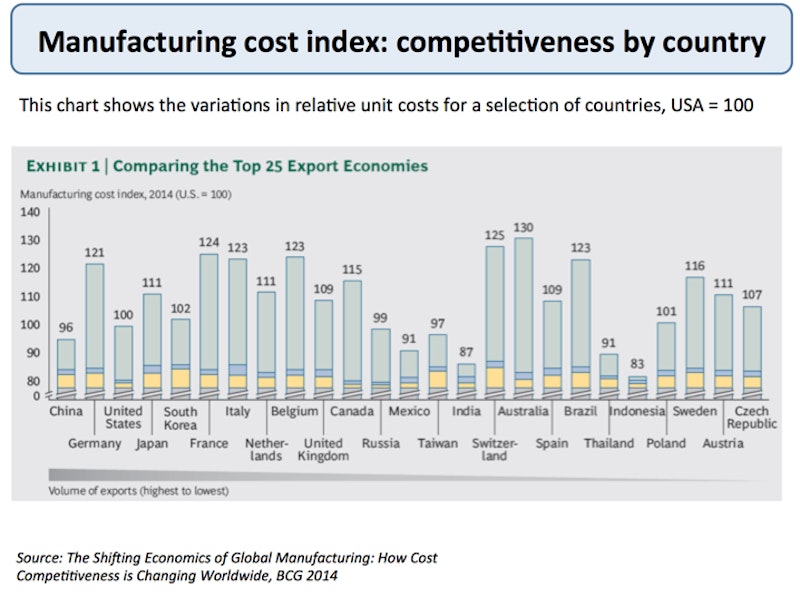Study Notes
Sources of Comparative Advantage
- Level:
- A-Level
- Board:
- AQA, Edexcel, OCR, IB
Last updated 21 Mar 2021
Comparative advantage is a dynamic concept meaning that it changes over time.
What are the Main Sources of Comparative Advantage?
For a country, some of the factors below are important in determining the relative unit costs of production:
- The quantity and quality of natural resources available for example some countries have an abundant supply of good quality farmland, oil and gas, or easily accessible fossil fuels. Climate and geography have key roles in creating differences in comparative advantage. More recently the shale gas revolution in the United States and elsewhere is leading to shifts in the future pattern of world energy production and trade as North America becomes more energy sufficient. Severe worries about water scarcity in the future in large parts of the developing world might have hugely significant effects on their ability to export products.
- Demographics - An ageing population, net outward or inward migration, educational improvements and women's participation in the labour force will all affect the quantity and quality of the labour force available for industries engaged in international trade.
- Rates of capital investment including infrastructure: Greater public infrastructure investment can reduce trade costs and hence increasing supply capacity. Investment in roads, ports and other transport infrastructure strengthens regional trade ties. ICT infrastructure is particularly important for countries wanting to build a competitive advantage in information-intensive sectors such as mobile telecommunications, gaming and financial services
- Increasing returns to scale and the division of labour – increasing returns occur when output grows more than proportionate to inputs. Rising demand in markets where trade takes place helps to encourage specialisation, higher productivity and internal and external economies of scale. These long-run scale economies can give regions and countries a significant unit cost advantage.
- Investment in research & development which can drive innovation and invention
- Fluctuations in the exchange rate, which affect the relative prices of exports and imports and cause changes in demand from domestic and overseas customers.
- Import controls such as tariffs, export subsidies and quotas – these can be used to create an artificial comparative advantage for a country's domestic producers.
- Non-price competitiveness of producers - covering factors such as the standard of product design and innovation, product reliability, quality of after-sales support. Many countries are now building comparative advantage in high-knowledge industries and specializing in specific knowledge sectors – an example is the division of knowledge in the medical industry, some countries specialize in heart surgery, others in pharmaceuticals – health tourism is becoming more important.
- Institutions – these are important for comparative advantage and for growth too. Banking systems are needed to provide capital for investment and export credits, legal systems help to enforce contracts, political institutions and the stability of democracy is a key factor behind decisions about where international capital flows.

Comparative advantage is often a self-reinforcing process
- Entrepreneurs in a country develop a new comparative advantage in a product either because they find ways of producing it more efficiently or they create a genuinely new product that finds a growing demand in home and international markets
- Rising demand and output encourages the exploitation of economies of scale; higher profits can be reinvested in the business to fund further product development, marketing and a wider distribution network. Skilled labour is attracted into the industry and so on
- The expansion of an industry leads to benefits from exploiting external economies of scale.

Comparative advantage is regarded by some economists as an unrealistic concept. This may negate the ability of a nation to exploit it: the realism can be challenged by considering factors such as imperfect factor mobility within an economy; protectionism; transport costs, non–homogenous products; imperfect information among producers and consumers.
You might also like
Economic Growth - Innovation
Study Notes
Transatlantic Trade and Investment Partnership
Study Notes
Evidence that “landlocked” economies are disadvantaged
1st June 2015

The UK Productivity Issue
15th November 2015

Globalisation's discontents
25th August 2016

Inward and Outward Thinking in 2017
15th January 2017
The Hong Kong Economy - 20 Years On
Study Notes